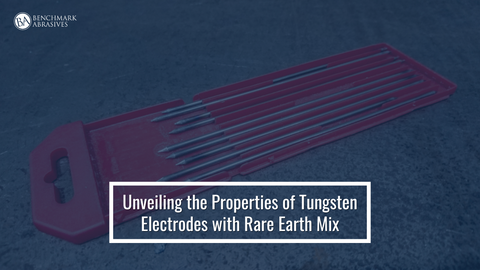
Unveiling the Properties of Tungsten Electrodes with Rare Earth Mix

An essential component in cutting, spraying, smelting, inert gas-shielded welding, plasma welding, and unique electric light sources is a tungsten electrode. Currently, cerium tungsten electrodes (CeO2) and thorium tungsten electrodes (ThO2) are more often used. During production and usage, thorium tungsten electrodes pose a radioactive risk to human health and the environment. As a result, scientists have created a novel kind of rare earth tungsten electrode that performs better overall.
The components of a good-performing, radioactive-contamination-free rare-earth tungsten electrode material are La2O3 and Y2O3, La2O3 and CeO2, Y2O3 and CeO2, and W. Each rare earth oxide has a weight content of 0.45 to 1.75%, and the overall weight of rare earth oxides is 2 to 2.2%.
The precise technique of preparation is as follows:
To create tungsten powder, rare-earth nitrate is first made into a solution, combined with tungsten trioxide powder, dried, and then reduced by hydrogen twice at 500–540°C and 640–920°C.
The tungsten powder is then processed into electrodes of different specifications by rotary forging and chain drawing after being pressed, pre-sintered at 1200±50°C, melted, and sintered at 90% fuse current.
To make the manufactured rare earth tungsten electrode material more advantageous than cerium tungsten electrode, lanthanum tungsten electrode (including La2O3), yttrium tungsten electrode (containing Y2O3), and thorium tungsten electrode, two rare earth oxides have been added. It has strong processing performance in addition to its use performance.
When operating at medium and moderate currents, the lanthanum tungsten electrode has high arc stability and electrode anti-burning performance; but, when employed at big currents, its processing performance is subpar and it burns severely.
When working with a big current, the yttrium tungsten electrode exhibits good anti-burning performance and a large arc pressure; however, manufacturing the electrode can be challenging, and the arc stability can be compromised when working with a small current.
CONCLUSION
We appreciate you taking the time to read our post, and we hope it has given you further insight into the new variety of rare earth tungsten electrodes.



































































